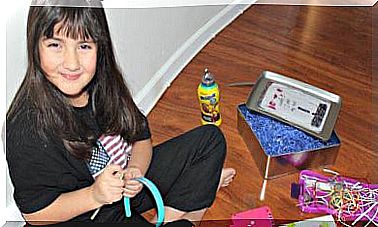The Development Of Your Child’s Self-esteem

Self-esteem is people’s awareness of their own worth. It is the peak of the rewarding feeling of loving and accepting yourself for who you are. It is also known as self-evaluation, because it is a personal judgment about your own worth of yourself. It is a fundamental piece in the construction of pillars of childhood and adolescence, it is not a subject that they give in school.
This is an issue that increasingly arouses the interest of parents in the education of their children. It is the result of the relationship between the character of the child and the environment in which it develops.
The concept we have of ourselves is fundamental in the development of learning, interpersonal relationships, and happiness. Self-esteem is built daily through trust, acceptance, and relationships.
Does self-esteem mark the development of the child?
It can be said that it influences a lot, because it is a reflection of mental health. With a proper self-concept, an emotional balance can be achieved that will influence self-confidence. These aspects in turn will be reflected in school performance and social relationships.
For this reason, when a child with high self-esteem feels capable, valuable and very sure of the things he does, he will be communicative, responsible and his relationship with others will be adequate. Otherwise, low self-esteem will mean insecurity, shyness, inferiority. In some cases, low self-esteem can lead to aggressive behaviors or isolation.
The role of parents in children’s self-esteem

Children’s emotions should not be ignored. Therefore, it is recommended that parents be vigilant when it comes to mood and attitude changes. From birth, children seek security and love in the people they see frequently. Reason why it is convenient to maintain good physical health in the children for their emotional stability.
Otherwise, when parents insist on labeling, pointing out, criticizing and not appreciating the effort their child makes, they end up changing their attitude negatively. In this regard, specialists point out some tips to develop your child’s self-esteem.
- Show affection towards the child.
- Always converse positively.
- Praise children when they do something good.
- Children’s feelings should always be taken into account.
- Set goals.
- Avoid comparisons, everyone is unique.
- Feel and show pride.
The stimulation and development of the child’s self-esteem

It is important to highlight that the family and the school are part of the process of socialization and development of self-esteem. Therefore, parents who show positive feelings, emotional support among other things, tend to raise children with high self-esteem.
For their part, parents who use physical force to determine a behavior can develop low self-esteem. According to most researchers, there is always an interaction between the parents and the infant’s self-esteem.
Similarly, at school, there has always been feedback among teachers and students about the things the child does. Depending on how teachers express themselves about your child, it could influence their development of self-esteem. If something negative were to happen, help, patience, and more attention at home would be needed.
Many times most children with low self-esteem always have behavior problems. Sometimes it is easy to recognize the evidence, for example family rejection and child abuse. In addition, academic failures could arise due to relationships with teachers and classmates, or worse, bullying.
Thus, adequate self-knowledge in children will prepare them for the future. Having a healthier and highly productive adult life depends on developing your self-esteem from childhood. For this reason, parents must improve their own mental health. It is evident that the difficulty will be much greater when raising children in the development of self-esteem, if we ourselves have deficiencies.
Cover image courtesy of shorogonov









